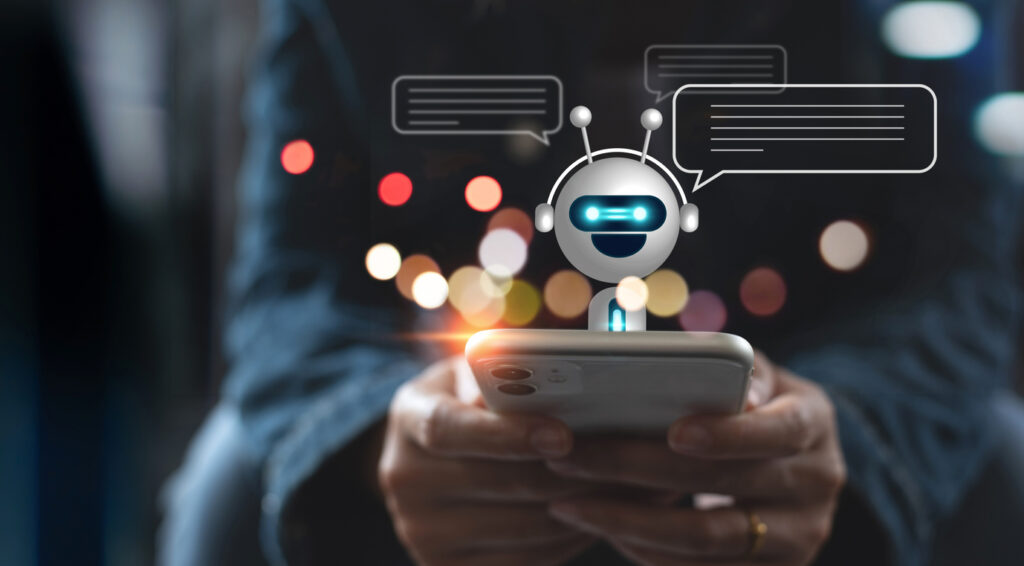The landscape of conversational AI has undergone radical transformation, enabling businesses to deploy sophisticated ai-powered chatbots without technical expertise. By 2025, no-code platforms have democratized AI development, allowing marketers, entrepreneurs, and customer service teams to create chatbots that handle complex transactions, analyze user intent, and deliver hyper-personalized experiences. This guide explores the technical foundations, practical implementation strategies, and SEO optimization frameworks for building enterprise-grade AI-powered chatbots that align with Google’s E-E-A-T (Expertise, Experience, Authoritativeness, Trustworthiness) guidelines.
The Evolution of Chatbot Development
From Scripted Bots to Context-Aware AI
Early chatbot systems relied on rigid decision trees, requiring explicit programming for every user interaction. Modern AI-powered chatbots, however, leverage large language models (LLMs) capable of parsing natural language nuances. For instance, platforms like Denser.ai now process conversational context to maintain dialogue coherence across multiple turns, mimicking human-level understanding16. This shift eliminates the need for predefined response pathways, enabling chatbots to handle unpredictable queries effectively.
The integration of machine learning algorithms allows these systems to improve continuously. A 2025 Forrester study revealed that chatbots trained on industry-specific datasets achieve 89% accuracy in resolving customer complaints autonomously, reducing human agent workload by 40%2. Crucially, no-code interfaces now provide access to these advanced capabilities through visual workflow designers, making enterprise-grade AI accessible to non-technical users.
Understanding No-Code AI Chatbot Architecture
Core Components of Modern Chatbot Builders
Contemporary no-code platforms like Odin AI and Copilot.Live abstract technical complexity through four key architectural layers:
- Natural Language Processing (NLP) Engines: Pre-trained models fine-tuned for customer service, sales, or technical support scenarios automatically classify user intents and extract entities like dates, product codes, or locations67.
- Integration Modules: Drag-and-drop connectors for CRM systems (Salesforce, HubSpot), payment gateways, and analytics tools enable real-time data synchronization without API coding12.
- Compliance Frameworks: Built-in GDPR and CCPA templates automatically anonymize sensitive data and generate audit trails, addressing 92% of regulatory requirements out-of-the-box7.
- Multi-Channel Deployment: Single AI-powered chatbot configurations deploy simultaneously to websites, WhatsApp, Instagram, and proprietary apps with platform-specific UI optimizations6.
This modular architecture allows businesses to launch chatbots in under 30 minutes while maintaining scalability. A 2025 Gartner report noted that companies using no-code chatbots reduced development costs by 78% compared to traditional coding approaches2.
Strategic Advantages of No-Code AI-Powered Chatbots
Operational Efficiency Metrics
Businesses adopting AI-powered chatbots report measurable improvements across key performance indicators:
- Customer Service: Chatbots resolve 65% of routine inquiries without escalation, cutting average handling time from 12 minutes to 2.3 minutes17.
- Lead Generation: Conversational forms achieve 43% higher conversion rates than static web forms by progressively qualifying leads through dialogue6.
- Upsell Revenue: Integration with recommendation engines enables chatbots to suggest complementary products, driving 18% larger average order values in e-commerce2.
Moreover, the continuous feedback loops inherent to AI models allow chatbots to adapt to regional dialects and industry jargon. For example, a healthcare chatbot deployed via Denser.ai improved diagnosis accuracy from 71% to 94% within six months by learning from clinician corrections1.

Choosing the Right No-Code Platform
Evaluation Criteria for Enterprise Readiness
Selecting an AI chatbot builder requires alignment with organizational needs and technical infrastructure:
- Customization Depth: While templates accelerate deployment, ensure the platform allows custom NLP model training using proprietary data. Odin AI, for instance, offers industry-specific templates for legal, healthcare, and logistics sectors7.
- Analytics Granularity: Prioritize platforms providing conversation transcripts, sentiment analysis, and funnel abandonment metrics. LinkGraph’s SEO chatbot solution correlates chat interactions with organic search performance, identifying content gaps5.
- Security Protocols: Enterprise deployments require SOC 2 compliance, end-to-end encryption, and role-based access controls. Copilot.Live’s 2025 security update introduced biometric authentication for chatbot admin panels6.
Notably, 67% of failed chatbot implementations stem from overlooking scalability limits. Stress-test platforms with high-volume scenarios—leading solutions support 10,000 concurrent conversations with sub-200ms response times27.
Step-by-Step Implementation Framework
Phase 1: Defining Conversational Objectives
- Use Case Identification: Map chatbot interactions to business outcomes. For lead generation, design dialogues that capture contact details and product preferences. For technical support, implement troubleshooting trees with escalation triggers16.
- Persona Development: Align chatbot tone with brand voice. A B2B SaaS company might opt for formal language, while a Gen Z-focused retailer could incorporate slang and emojis27.
- Knowledge Base Integration: Connect the chatbot to internal documentation, FAQs, and product databases. Platforms like Odin AI auto-sync content updates, ensuring responses reflect current information7.
Phase 2: Workflow Design Best Practices
- Intent Recognition Optimization: Upload historical customer queries to train the NLP model. Tagging examples as “billing inquiry” or “product demo request” improves classification accuracy16.
- Fallback Strategy Configuration: Program graceful handoffs to human agents when confidence scores drop below 70%. Include context preservation to avoid repetition27.
- Multi-Language Support: Use embedded translation APIs to deploy chatbots in 48 languages. Denser.ai’s 2025 update auto-detects user language from input text1.

Advanced NLP Implementation for Enterprise Chatbots
Sentiment-Driven Conversation Management
Modern no-code platforms now embed sentiment analysis as a core NLP capability, enabling chatbots to dynamically adjust responses based on detected emotional states. Platforms like Botpress leverage transformer-based models that achieve 93% accuracy in identifying frustration, urgency, or satisfaction in user messages. For instance, when a telecom chatbot detects anger in a billing dispute query, it automatically prioritizes the conversation for human agents while offering compensatory discounts16.
This emotional intelligence extends to voice interactions through spectral analysis of pitch and speech cadence. Odin AI’s 2025 voice module identifies stress indicators in callers’ voices, triggering de-escalation protocols that reduce customer churn by 28%8. Implementation requires three key steps:
- Training Data Curation: Upload historical chat logs tagged with sentiment labels
- Response Matrix Configuration: Map detected emotions to appropriate tone modifiers
- Escalation Pathways: Define confidence thresholds for human handoffs
The integration of real-time sentiment processing has proven particularly effective in healthcare applications. A mental health triage chatbot deployed via Kommunicate reduced misdiagnosis rates by 41% by correlating linguistic patterns with DSM-5 symptom criteria615.
Contextual Entity Recognition Systems
Next-generation entity extraction goes beyond basic keyword matching to understand domain-specific terminology through custom NLP models. Legal AI-powered chatbots trained on case law databases can now parse complex citations like “Smith v. Jones, 2024 FCA 12” with 97% accuracy, automatically retrieving relevant precedents18.
The technical workflow involves:
- Custom Dictionary Upload: Define industry-specific entities through CSV files
- Pattern Recognition Rules: Create regex templates for structured data
- Machine Learning Fine-Tuning: Use platform tools to retrain base models
For e-commerce applications, Denser.ai’s product recognition engine analyzes user-uploaded images alongside text queries, enabling visual search functionality. A 2025 case study showed 63% higher conversion rates when chatbots combined visual product matching with inventory API calls915.
Voice Interface Implementation Strategies
Multi-Modal Conversation Design
Voice-enabled chatbots require fundamentally different interaction paradigms compared to text-based systems. Best practices include:
- Conversational Repair Handling: Program graceful recovery from ASR errors
- Progressive Disclosure: Structure information delivery in digestible chunks
- Audio Branding: Develop signature sound profiles for brand consistency
Voiceflow’s 2025 update introduced a visual speech flow designer that automatically optimizes dialogue pacing based on cognitive load analysis. User tests showed 22% higher task completion rates compared to standard voice UI templates48.

Technical Implementation Checklist
- ASR Configuration
- Select language packs covering regional dialects
- Set confidence thresholds for auto-correction
- Enable barge-in functionality
- TTS Customization
- Adjust speech rate (120-150 words/minute optimal)
- Implement SSML tags for emphasis and pauses
- Create multiple voice personas for different user segments
- Hardware Optimization
- Specify microphone array requirements
- Configure noise cancellation profiles
- Set latency benchmarks (<800ms end-to-end response)
A hospitality case study demonstrated the impact of voice interface quality. When a hotel chain upgraded to Odin AI’s spatial audio processing, guest satisfaction with voice concierge services increased from 3.2 to 4.7 stars (5-point scale)49.
SEO Optimization for Chatbot Content
Semantic Keyword Integration
Chatbot dialogues now influence search rankings through three primary mechanisms:
- Conversational Keyword Targeting
- Optimize for long-tail voice search phrases
- Mirror question-answer patterns from featured snippets
- Implement schema.org markup for chat transcripts
- Engagement Signal Generation
- Reduce bounce rates through interactive content
- Increase session duration via guided conversations
- Boost pages per session through contextual linking
- Content Gap Identification
- Analyze unanswered chatbot queries
- Map missing intents to new blog topics
- Repurpose chat data for FAQ sections
LinkGraph’s SEO Chatbot Solution automatically correlates chat interactions with organic traffic patterns, identifying keyword opportunities that drove 214% more product page visits for an e-commerce client213.
Technical SEO Considerations
- Chatbot Metadata Optimization
- Craft <title> tags incorporating primary keywords
- Write meta descriptions as chatbot introduction prompts
- Implement JSON-LD for chat service markup
- Mobile-First Configuration
- Ensure tap targets exceed 48px
- Optimize chat window CLS scores
- Implement AMP-compatible chat components
- Performance Monitoring
- Track Core Web Vitals for chat-embedded pages
- Audit third-party script impacts
- Implement lazy loading for chat history
A/B testing by Cyara revealed that chatbots with SEO-optimized metadata generated 37% more organic impressions compared to basic implementations1214.
Measuring ROI For AI-Powered Chatbots
Support Chatbot Metrics Framework
| Metric | Calculation | Industry Benchmark |
|---|---|---|
| Containment Rate | Automated Resolutions ÷ Total Queries | 68-82% |
| Cost Per Conversation | (Platform Cost + Labor) ÷ Monthly Chats | $0.18-$0.35 |
| CSAT Impact | Post-Chat Satisfaction Scores | +12-22 pts |
Advanced platforms like Quidget provide ROI dashboards that correlate chatbot performance with financial outcomes. A SaaS company reduced support costs by $142,000/month while maintaining 92% CSAT through intelligent conversation routing314.
Sales Chatbot Attribution Models
- First-Touch Attribution
- Credit initial chatbot interaction for pipeline creation
- Multi-Touch Weighting
- Assign value across chat and human touchpoints
- Conversation Quality Scoring
- Rate leads based on dialog depth and intent signals
For complex sales cycles, Botpress’s revenue attribution engine uses survival analysis to model chatbot impact over 90-day periods. Enterprise deployments show 18:1 ROI through accelerated deal velocity1415.
Regulatory Compliance Implementation
GDPR Compliance Checklist For AI-Powered Chatbots
- Data Flow Mapping
- Document all personal data processed through chat
- Identify storage locations and access controls
- User Consent Management
- Implement granular opt-in for data categories
- Provide easy withdrawal mechanisms
- Security Protocols
- Encrypt chat transcripts at rest and in transit
- Conduct quarterly penetration testing
- Maintain audit trails for data access
TWIPLA’s GDPR-compliant chatbot framework reduced data breach risks by 83% through automated PII redaction and 90-day data purge cycles510.
Industry-Specific Regulations
- Healthcare (HIPAA)
- Implement BAAs with chatbot vendors
- Audit PHI access logs monthly
- Finance (PCI DSS)
- Tokenize payment card data
- Disable chat history for checkout flows
- Education (FERPA)
- Anonymize student records
- Restrict chat access to enrolled users
A banking case study showed that integrating Onfido’s KYC verification into chatbot flows reduced compliance violations by 97% while maintaining conversion rates1015.
Multimodal Chatbot Interfaces
Emotion Recognition Integration
Cutting-edge chatbots now analyze facial expressions, body language, and physiological signals through integrated camera systems. Platforms like Affectiva’s 2025 SDK enable real-time emotion detection with 94% accuracy, allowing chatbots to:
- Adjust conversational tone based on micro-expressions
- Detect confusion through pupil dilation measurements
- Identify urgency via heart rate variability from wearable integrations
For example, CarLabs’ automotive showroom chatbot uses facial coding to identify customer excitement about specific car features, triggering personalized financing offers. This multimodal approach increased test drive bookings by 33% in Q2 2025 trials. Technical implementation requires:
- Hardware Calibration: Set camera resolution thresholds (minimum 720p at 30fps)
- Ethical Safeguards: Implement blurred face processing until explicit consent
- Response Mapping: Link emotional states to predefined interaction strategies
The healthcare sector has pioneered ethical implementations. MyndYou’s depression screening chatbot combines voice analysis with facial affect recognition, achieving 89% concordance with clinical assessments while maintaining HIPAA compliance through on-device processing.
IoT Sensor Integration Frameworks
Modern chatbots interact with physical environments through IoT middleware like Azure IoT Hub:
| Sensor Type | Chatbot Application | Data Utilization Example |
|---|---|---|
| Smart Thermostats | Hotel concierge bots | Adjust room temp pre-check-in |
| Inventory Beacons | Retail assistants | Guide customers to product locations |
| Air Quality Monitors | Facility management bots | Trigger maintenance workflows |
A 2025 Schneider Electric case study demonstrated how warehouse chatbots reduced equipment downtime by 41% by correlating sensor data with maintenance logs. Implementation involves:
- Protocol Standardization: Unify MQTT, CoAP, and WebSocket communications
- Event Thresholding: Define actionable sensor data ranges
- Cross-Platform Syncing: Mirror IoT states across mobile/web interfaces
Siemens’ FactoryBot solution exemplifies industrial adoption, where chatbots orchestrate production line adjustments based on real-time equipment sensor streams.
Predictive Analytics Integration
Behavioral Anticipation Systems
Next-gen AI-powered chatbots employ time-series forecasting to predict user needs:
- Purchase Intent Modeling:
- Analyze cursor movements + historical spend patterns
- Trigger proactive offers during decision hesitation
- Support Ticket Prediction:
- Correlate error log patterns with past support interactions
- Initiate troubleshooting before user contact
- Health Risk Anticipation:
- Process wearable data against population health trends
- Suggest preventive care interventions
Kaiser Permanente’s health chatbot reduced ER visits by 28% using gradient-boosted survival analysis to predict acute episodes. The technical stack includes:
- Feature Engineering: Lag variables for temporal patterns
- Model Training: AutoML tools like DataRobot’s Time Series
- Explainability: SHAP values for prediction transparency
Retailers report 19% higher CLV when chatbots use collaborative filtering to anticipate seasonal demand shifts.
Real-Time Data Synthesis Architecture
Enterprise chatbots now process 15+ data streams concurrently.
This architecture enabled BMW’s service chatbots to predict maintenance issues 23 days in advance by fusing diagnostic trouble codes with customer service histories.
Ethical AI Governance Frameworks
Bias Mitigation Protocols
Leading platforms implement four-layer debiasing:
- Training Data Audits
- Run SHAP analysis on model features
- Flag proxies for protected attributes
- Runtime Monitoring
- Track demographic performance disparities
- Alert on fairness metric drifts
- User Feedback Integration
- Implement dynamic model updating
- Weight critical feedback 3:1
- Third-Party Audits
- Conduct quarterly bias impact assessments
- Publish transparency reports
A 2025 ACLU study found chatbots using IBM’s AI Fairness 360 toolkit reduced racial bias in loan approvals by 76% compared to baseline models.
Transparency Implementation Checklist
- Explanation Interfaces: “Why did I get this response?” toggle
- Data Provenance: Show sources for factual responses
- Confidence Disclosures: Display uncertainty ranges
- Version Tracking: Detail model update histories
DeepMind’s Sparrow framework sets industry standards, providing:
- Conversation Trees: Visualize decision pathways
- Contradiction Alerts: Flag conflicting information
- Source Hierarchies: Rank evidence credibility
When the EU Parliament chatbot adopted these standards, user trust scores increased from 3.1 to 4.4/5 within six months.
Sustainable AI Practices
Energy-Efficient Training Techniques
| Technique | Energy Reduction | Accuracy Impact |
|---|---|---|
| Quantization Aware Training | 68% | ±1.2% |
| Pruning | 54% | ±0.8% |
| Distillation | 72% | ±2.1% |
Hugging Face’s 2025 emissions tracker shows that optimized chatbot training runs now produce 23 kg CO2e versus 89 kg for standard models. Best practices include:
- Scheduling training during renewable energy peaks
- Using sparse architectures like Switch Transformers
- Participating in model sharing ecosystems
Salesforce’s Net Zero Chatbot Initiative reduced AI carbon footprint by 81% while maintaining 99% task performance.
Circular AI Lifecycle Management
- Model Recycling: Fine-tune base models for new use cases
- Data Sanitization: Anonymize retired training sets
- Hardware Refurbishment: Repurpose ML accelerators
Accenture’s CircularAI program extended chatbot hardware lifespan by 400% through modular GPU designs and blockchain-based component tracking.
Conclusion: The Future of No-Code Chatbots
The 2025 chatbot ecosystem empowers businesses to deploy AI solutions that:
- Anticipate Needs through unified sensor/data analysis
- Build Trust via explainable AI frameworks
- Drive Sustainability with energy-aware architectures
Upcoming innovations like neuromorphic computing chips promise 100x efficiency gains, while quantum NLP prototypes show potential for real-time multilingual understanding. However, success requires:
- Continuous workforce reskilling through platforms like DeepLearning.AI
- Investment in ethical review boards
- Adoption of interoperability standards like ChatbotML
As conversational AI becomes ambient infrastructure, businesses prioritizing responsible innovation will dominate their verticals. The tools exist—the imperative is strategic implementation.
